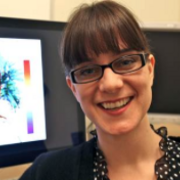Novel computational methods for higher order diffusion MRI in autism
The diagnosis of autism spectrum disorder (ASD) is currently based on behavior and developmental history of the child. With the development of advanced forms of diffusion-weighted magnetic resonance imaging (DW-MRI), it is expected that imaging will elucidate pathology-induced and neuro-developmental changes in white matter (WM) architecture, and provide diagnostic and predictive anatomical biomarkers.
We aim at developing computational methods for processing and analysis of high angular resolution diffusion imaging data that has been fitted with higher order diffusion models (HOMs). Compared to the tensor model in diffusion tensor imaging (DTI), HOMs provide a much richer understanding of pathology-based connectivity changes in complex WM regions, as well as a quantification of the degree of abnormality of WM. These imaging measures when correlated with clinical measures of symptom severity will provide additional insight into the pathology and its progression, thus making this project very clinically significant. Understanding such complex WM regions is expected to aid in the study of ASD, deficits in which can be linked with WM abnormalities and disruptions in structural connectivity via fiber tracts. The advances in acquisition of data that can be fitted with HOMs in turn calls for novel automated tools for analyzing such data, as existing methods developed for tensors are inapplicable to HOMs.





